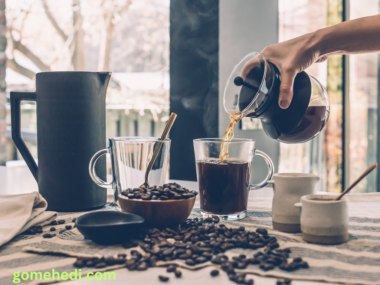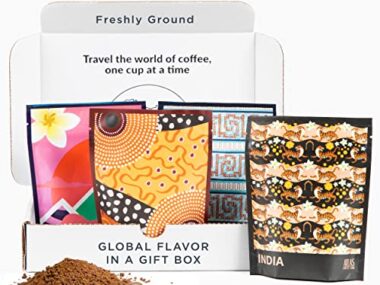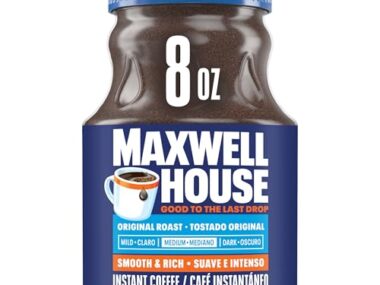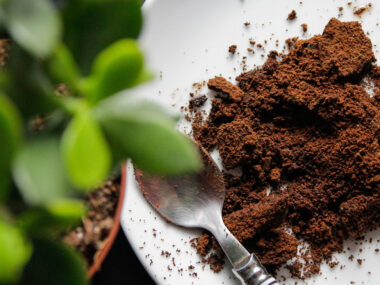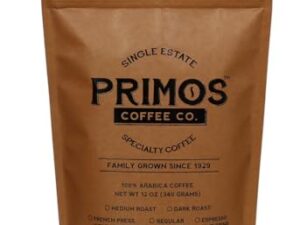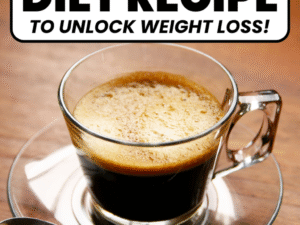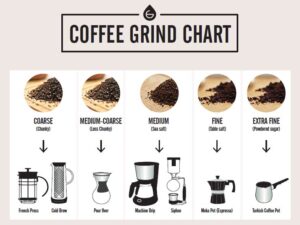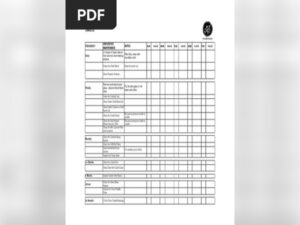The best coffee for cold brew is a medium or dark roast. These roasts offer robust flavors that shine when brewed cold.
Cold brew coffee has gained popularity for its smooth taste and low acidity. Brewing it at home can be an enjoyable experience, but choosing the right coffee is crucial. Different types of coffee bring unique flavors to cold brew, and selecting the best one depends on your taste preferences.
Some enjoy bold, chocolatey notes, while others prefer a nutty or fruity profile. Understanding the characteristics of different coffee roasts can help you make a delicious cold brew. This guide will explore the options, helping you craft the perfect cold brew at home. Let’s dive into the world of coffee and find your ideal match.
Best Coffee Beans
Making cold brew at home is a delightful experience. The right coffee beans make it even better. Choosing the best coffee beans for cold brew can be tricky. Not all beans are created equal. Some beans are ideal for hot brewing but not for cold brew. Cold brew coffee is smoother and less acidic than regular coffee. It requires beans that enhance this smoothness. Let’s explore the types of beans and their flavor profiles to find the best match for your cold brew.
Types Of Beans
Different beans offer unique qualities for cold brew. Arabica beans are popular for their smooth and mild taste. They are often preferred for cold brew due to their subtle flavors. Robusta beans are known for their strong and bold flavors. They have higher caffeine content and can add a punch to your cold brew. Here’s a brief look at some types:
-
Arabica: Smooth, mild, and often fruity.
-
Robusta: Strong, bold, and high in caffeine.
-
Blend: Combines Arabica and Robusta for balanced taste.
Choosing between single-origin beans or blends can affect your brew. Single-origin beans provide specific regional flavors. Blends offer a mix of flavors and can be more balanced. Consider your preference for taste and caffeine. Experiment with different types to find what suits your palate best.
Flavor Profiles
Flavor is an essential aspect of coffee. Cold brew emphasizes certain flavors more than hot brew. Nutty and chocolatey flavors are common in cold brew. They provide a rich and smooth taste. Fruity and floral notes can be refreshing. These flavors are often found in Arabica beans. Here are some popular flavor profiles:
|
Flavor Profile |
Description |
|---|---|
|
Nutty |
Rich and smooth, adds depth. |
|
Chocolatey |
Sweet and indulgent, enhances creaminess. |
|
Fruity |
Bright and refreshing, adds zing. |
|
Floral |
Light and aromatic, adds elegance. |
Some beans offer complex flavors. They can include hints of spices or caramel. These flavors add unique character to your brew. Experimenting with different profiles can enhance your cold brew experience. Discovering the perfect combination is part of the fun. Try various beans and flavors to find your ideal cold brew taste.

Credit: thatscoldbrew.com
Grind Size Matters
Finding the best coffee for cold brew at home is essential for a refreshing drink. Cold brew is a slow process that extracts flavors smoothly. Grind size plays a crucial role in the outcome. It affects the taste and texture of your coffee. Understanding the right grind size can make your cold brew delicious. Let’s dive deeper into why grind size matters and how it impacts flavor.
Coarse Grind
Coarse grind is the ideal choice for cold brew coffee. It has larger coffee particles compared to a fine grind. This size allows water to flow through more easily. It prevents over-extraction, which can make your coffee bitter. Here’s why coarse grind is beneficial:
-
Prevents bitterness by avoiding over-extraction of flavors.
-
Allows for a smoother taste as the flavors extract slowly.
-
Easy to filter as larger particles don’t clog the filter.
Using a coarse grind ensures the coffee soaks properly. It’s crucial for the 12-24 hour steeping process. This grind size results in a balanced and flavorful cold brew. Invest in a good grinder to achieve a consistent coarse grind. This small step makes a big difference in your home brewing experience.
Effects On Flavor
Grind size significantly impacts the flavor of your cold brew. A coarse grind provides a smooth and mellow taste. Here’s how different grind sizes affect flavor:
|
Grind Size |
Flavor Profile |
|---|---|
|
Coarse |
Smooth, balanced, less bitter |
|
Medium |
Slightly stronger, can be bitter |
|
Fine |
Strong, often too bitter |
Coarse grind allows for even extraction of flavors. It avoids the harsh bitterness found in finer grinds. This results in a drink that’s pleasant and enjoyable. Understanding these effects helps you choose the right grind. It ensures that your cold brew is always delicious and satisfying.
Brewing Methods
Cold brew coffee is a favorite choice for many, especially during hot days. It’s smooth, less acidic, and can be a refreshing change from regular coffee. Choosing the best coffee for cold brew at home can make all the difference. Different brewing methods can influence the taste and quality. Understanding these methods helps you pick the perfect coffee beans and make an amazing cold brew.
Immersion Technique
The immersion technique is simple and popular for cold brew. It involves soaking coffee grounds in cold water for a long time. Usually, 12 to 24 hours. This method is perfect for beginners. Why? It’s easy and forgiving. You don’t need fancy equipment. Just a jar or a pitcher. Here’s how you can do it:
-
Use coarse coffee grounds. This prevents bitterness.
-
Mix coffee with cold water. Ratio: 1 part coffee to 4 parts water.
-
Let it sit at room temperature or in the fridge.
-
Strain the mixture with a sieve or coffee filter.
-
Enjoy your cold brew. Serve over ice or dilute with water or milk.
Tips: Choose a medium or dark roast coffee for richer flavors. Freshly ground coffee beans make a big difference. Experiment with the brewing time. Longer brewing can lead to stronger flavors.
Cold Drip Method
The cold drip method offers a different experience. It’s more complex but worth it for coffee lovers. Why is it special? It creates a concentrated coffee with unique flavors. The process involves dripping cold water over coffee grounds slowly. It can take several hours. This method requires a special cold drip coffee maker. Here’s a simple guide:
-
Set up the drip coffee maker.
-
Place coarse coffee grounds in the coffee chamber.
-
Fill the water chamber with cold water.
-
Adjust the drip rate. Usually 1 drip per second.
-
Let it drip over several hours.
The result is a strong, rich coffee concentrate. Important: Use high-quality coffee beans for the best taste. Light or medium roast works well. You can dilute the concentrate with water or milk before serving. Experiment with different coffee beans to find your favorite flavor.
Water Quality
Cold brew coffee is a popular choice for many coffee lovers. It offers a smooth and refreshing taste. Making cold brew at home can be fun and easy. But to make the best cold brew, water quality is key. Good water helps bring out the best flavors in the coffee. Poor water can lead to a dull or bitter taste. It’s important to understand the role of water quality in making your perfect cold brew.
Filtered Vs Tap
Choosing between filtered and tap water can affect your cold brew. Filtered water removes impurities like chlorine and heavy metals. This can improve the taste of your coffee. Tap water, on the other hand, may contain chemicals and minerals that alter the coffee’s flavor.
-
Filtered water is often cleaner and has fewer impurities.
-
Tap water may have a higher mineral content, which can be good or bad.
-
Taste difference: Filtered water often results in a smoother taste.
Some people prefer the convenience of tap water. Others choose filtered water for a cleaner taste. It’s about finding what works best for you. Try both to see which one you like more. The choice can make a big difference in your cold brew experience.
Mineral Content
The mineral content of water can change the taste of cold brew. Hard water has a lot of minerals like calcium and magnesium. These minerals can add a slight bitterness to the coffee. Soft water has fewer minerals, which can make the coffee taste flat.
Here is a simple table to help understand mineral levels:
|
Type of Water |
Mineral Level |
Effect on Coffee |
|---|---|---|
|
Hard Water |
High |
Slightly bitter taste |
|
Soft Water |
Low |
Flat taste |
Experimenting with different waters can help you find your perfect brew. Some people mix hard and soft water for balance. Others might use bottled spring water for a unique taste. Adjusting mineral content can enhance or change your coffee’s flavor.
Coffee-to-water Ratio
Cold brew coffee is a refreshing way to enjoy your favorite beverage, especially during the warmer months. It’s known for its smooth, rich flavor and less acidity compared to traditional hot brews. Brewing cold coffee at home allows you to experiment with different types of beans and ratios to find your perfect cup. Understanding the coffee-to-water ratio is vital in crafting a cold brew that suits your taste preferences. This guide will explore the best ratios and how to adjust them for your unique taste.
Standard Ratios
The coffee-to-water ratio is crucial in determining the flavor and strength of your cold brew. A common ratio is 1:8, meaning one part coffee to eight parts water. This ratio is a good starting point for beginners.
Here are some standard ratios to consider:
-
1:8 Ratio – Mild taste, suitable for those who prefer lighter coffee.
-
1:6 Ratio – Stronger flavor, ideal for those who enjoy a robust brew.
-
1:4 Ratio – Bold and intense, perfect for coffee enthusiasts.
Using a kitchen scale can help ensure precision in measuring coffee and water. Consistency is key to achieving the desired taste. Below is a simple table for reference:
|
Coffee (grams) |
Water (milliliters) |
|---|---|
|
50g |
400ml |
|
75g |
450ml |
|
100g |
400ml |
Adjusting For Taste
Adjusting the coffee-to-water ratio allows you to personalize the flavor of your cold brew. Experimenting with different ratios helps find the balance between strength and smoothness.
Consider these tips for adjusting taste:
-
Increase Coffee – For a stronger taste, use more coffee grounds.
-
Decrease Coffee – For a milder flavor, reduce the amount of coffee.
-
Adjust Brew Time – Longer brewing can enhance flavor and depth.
Remember that personal preference plays a significant role in crafting your ideal cold brew. Taste-testing during the brewing process helps ensure the final product aligns with your expectations. Trial and error is often necessary to achieve the perfect balance.
:max_bytes(150000):strip_icc()/Simply-Recipes-Cold-Brew-Coffee-LEAD-16-428691bcdd594281b2f5dc6dbc8235e4.jpg)
Credit: www.simplyrecipes.com
Steeping Time
Cold brew coffee is a popular choice for many coffee lovers. It is smooth, less acidic, and can be made at home with ease. The key to a good cold brew lies in the choice of coffee and the steeping time. Steeping time is crucial as it affects the flavor and strength of your cold brew. Choosing the right coffee and mastering the steeping time can elevate your home cold brew experience. Let’s dive into the details of steeping time to help you make the best cold brew at home.
Short Vs Long
Steeping time is a significant factor in cold brew preparation. It can range from a few hours to over a day. A short steeping time, typically around 8 to 12 hours, results in a lighter brew. This is ideal for those who prefer a mild coffee flavor. It is quicker to make but might lack the depth some coffee lovers seek.
A long steeping time, often extending to 24 hours, produces a richer and stronger brew. The extended time allows more extraction of flavors from the coffee grounds. This is perfect for those who enjoy a bold and robust coffee experience. The longer steeping time, however, requires more patience.
Here are some key differences:
-
Short Steeping: 8-12 hours, lighter flavor, quicker process.
-
Long Steeping: 18-24 hours, stronger flavor, more patience needed.
Choosing between short and long steeping times depends on personal preference. It also depends on how much time you have to prepare your cold brew.
Impact On Taste
Steeping time has a direct impact on the taste of your cold brew. A short steeping time usually yields a mild and smooth flavor. This can be refreshing and is often preferred in warm weather. The coffee’s natural sweetness is more pronounced, and it is less bitter.
In contrast, a long steeping time creates a bold and intense flavor. The coffee’s full-bodied characteristics are more evident. This results in a more complex taste profile. Some may find this brew too strong, but others appreciate its depth.
Consider these taste differences:
|
Steeping Time |
Taste Profile |
|---|---|
|
Short |
Mild, smooth, sweet |
|
Long |
Bold, intense, complex |
The choice of steeping time impacts not just the flavor, but also the aroma and mouthfeel of your cold brew. Experiment with different times to find the perfect balance for your taste.
Storage Tips
Cold brew coffee is a refreshing drink, especially during warm weather. It’s different from regular coffee because it’s brewed cold. The type of coffee you use can change the flavor. Choosing the best coffee for cold brew at home is important. Storage tips can help keep your coffee fresh and tasty. Good storage makes a big difference. Fresh beans are the key to a delicious cold brew. This guide will help you with storage tips.
Best Practices
To make the best cold brew, start with fresh coffee beans. Whole beans are better than ground coffee. They keep their flavor longer. Grind the beans just before brewing. This keeps the coffee aromatic and rich. Use an airtight container for storage. It protects the beans from air and moisture. Avoid clear containers. Light can affect the beans’ quality. Store your coffee in a dark and cool place. The fridge or a pantry works well.
Here are some storage tips:
-
Use whole beans instead of ground coffee for longer freshness.
-
Grind beans just before brewing to keep the flavor.
-
Store in airtight containers to block air and moisture.
-
Choose opaque containers to protect beans from light.
-
Keep in a cool, dark place like a pantry or fridge.
Avoiding Staleness
Stale coffee can ruin your cold brew experience. Freshness matters when it comes to flavor. Coffee beans become stale when exposed to air. Use a vacuum-sealed container. This helps keep them fresh longer. Store beans away from heat sources. Heat can speed up staleness. Avoid placing coffee near ovens or windows. Smells from other foods can affect coffee too. Make sure containers are sealed tightly.
Consider these tips to avoid staleness:
-
Use a vacuum-sealed container for longer freshness.
-
Store away from heat sources like ovens and windows.
-
Seal containers tightly to prevent exposure to air.
-
Keep away from foods with strong smells.
-
Check expiration dates and use coffee within a few weeks.
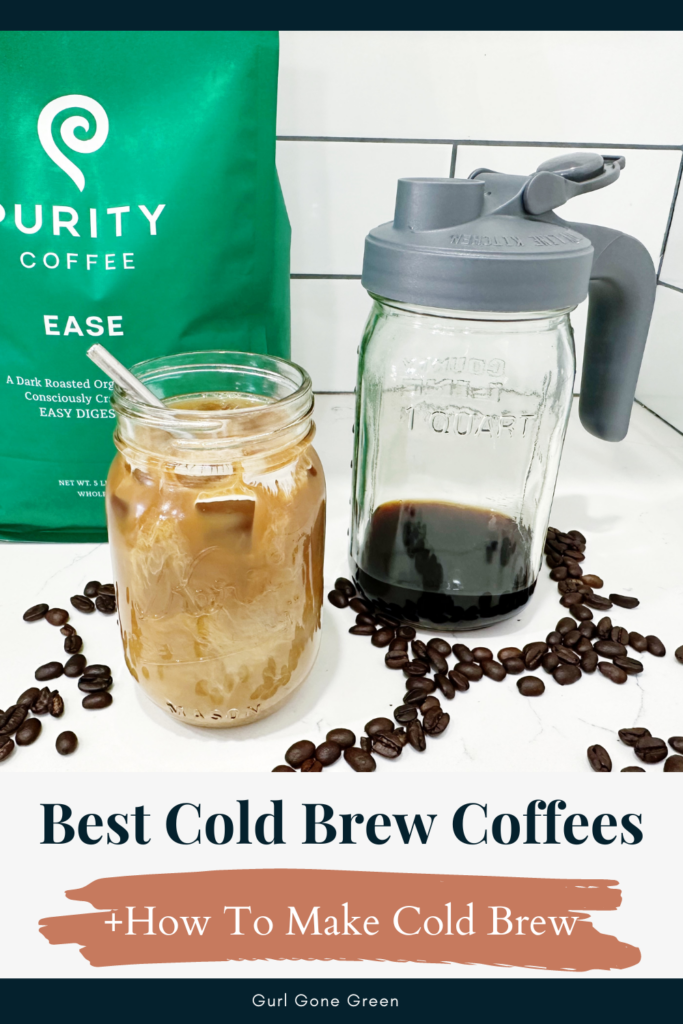
Credit: gurlgonegreen.com
Serving Suggestions
Cold brew coffee is a refreshing way to enjoy coffee at home. It offers a smooth and rich taste, perfect for a hot day. Choosing the right coffee beans is essential for the best cold brew experience. Freshness and grind size are key factors. Medium to coarse grind works best. The flavor should be rich but not too overpowering. Arabica beans are often recommended for their smooth flavor. Serving suggestions can make your cold brew even more enjoyable. Let’s explore some ideas.
Additives
Enhancing your cold brew with additives can elevate its flavor. Simple ingredients can make a big difference. Here are some popular options:
-
Milk or Cream: Adds richness and a creamy texture.
-
Sweeteners: Sugar, honey, or syrup for added sweetness.
-
Spices: Cinnamon or nutmeg for a warm, spicy kick.
-
Vanilla Extract: A splash for a sweet, aromatic touch.
-
Chocolate Syrup: A drizzle for a mocha-like flavor.
Experiment with these additives to find your perfect blend. Remember, a little goes a long way. Start with small amounts and adjust to taste. These simple additions can transform your cold brew into a delicious treat.
Pairing Ideas
Cold brew coffee pairs well with various foods. The right pairing can enhance your coffee experience. Consider these ideas:
-
Pastries: Croissants, muffins, or scones complement the coffee’s smoothness.
-
Fruit: Berries or citrus fruits add a refreshing contrast.
-
Cheese: Soft cheese like brie pairs well with cold brew.
-
Chocolate: Dark chocolate enhances the coffee’s rich flavors.
-
Ice Cream: A scoop of vanilla ice cream for a cold brew float.
Choose pairings that match your taste preferences. Try different combinations to discover new favorites. Whether sweet or savory, the right pairing can make your cold brew experience memorable.
Frequently Asked Questions
What Coffee Is Best For Cold Brew At Home?
Medium to coarse ground coffee works best for cold brew at home. Choose a rich, smooth blend with low acidity. Popular choices include Colombian, Ethiopian, or a dark roast. Experiment with different beans to find your perfect flavor. Freshly ground coffee beans enhance the taste and aroma.
What Coffee Variant Is Best For Cold Brew?
Medium to dark roast coffee is ideal for cold brew. It offers rich, smooth flavors and lower acidity. Coarse ground beans ensure optimal extraction. Popular choices include Colombian, Brazilian, and Ethiopian blends. Choose fresh, high-quality beans for the best taste.
Experiment to find your preferred flavor profile.
Can You Use Store-bought Coffee For Cold Brew?
Yes, you can use store-bought coffee for cold brew. Choose coarsely ground coffee for optimal flavor. Popular brands often offer suitable options. Ensure the coffee is fresh for best results. Adjust steeping time and coffee-to-water ratio to taste preferences. Enjoy your homemade cold brew!
What Coffee Roast Is Best For Cold Brew?
Medium to dark roast coffee is ideal for cold brew. These roasts provide rich, bold flavors and smooth undertones. Cold brew extracts less acidity, making darker roasts taste smoother and more balanced. Experiment with different beans to find your perfect cold brew flavor profile.
Conclusion
Choosing the best coffee for cold brew at home depends on your taste. Some prefer light roasts for a bright, fruity flavor. Others enjoy dark roasts for a richer, chocolatey taste. Experiment with different beans to find your favorite. Freshly ground coffee always gives the best results.
Try various brands and blends to discover what suits you. Enjoy the process and savor your perfect cold brew. Happy brewing!

